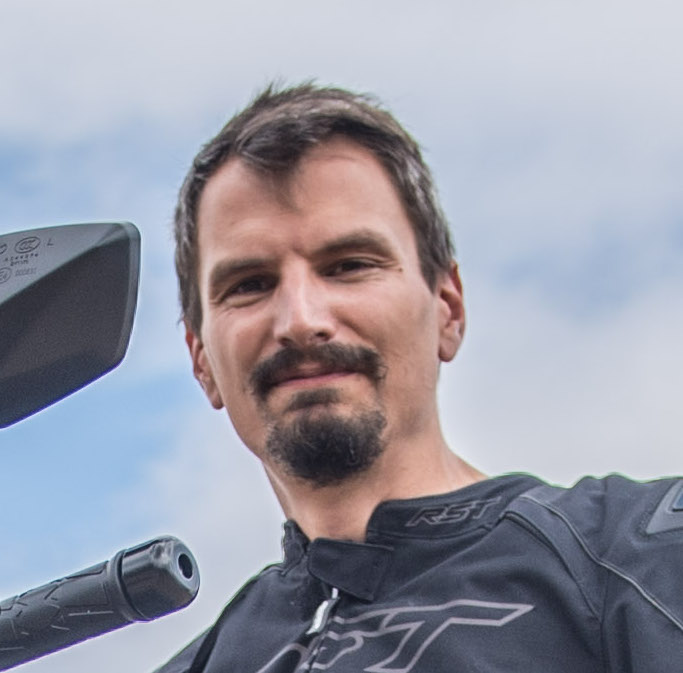A Lot More Goes Into Making Motorbike Kit Than You Might Think
We went to Spada’s UK HQ to chat with design and development boss James Kent about the process of bringing motorbike kit from sketch to the shop shelf

When picking up different bits of motorbike kit from hangers on shop floors or perusing pictures within an online store, you’ve probably never stopped to wonder how it got there. We don’t just mean the factory it was made in, the shipping container it lived in at sea, the warehouse it sat in and the lorry that carted it to its retail destination. No - before any of that starts, the product has to be developed and engineered in the first place, and there’s a whole lot more to that process than you might imagine.
For James Kent, Product Development & Design Manager for Spada, it involves sketches, numerous prototypes and many flights back and forth between the UK and Pakistan. In the beginning, though, it’s rather less glamorous. “It all starts with a PDF,” explains James on our visit to Spada’s HQ in Birmingham.

Although he admits, there are some elements that go back further before it’s decided what the product is even going to be, starting with brainstorming, mood-boarding and brand strategy decisions. Research for products emerging in 2025 already started back in December 2023. At the early stages of a project, the team will figure out a “target retail price and work backwards from that,” James says.
Once that’s been worked out - in this case, we’re looking at a leather jacket as an example - it’s time for a supplier briefing. This is, yes, a PDF, which shows James’ vision for how the product is going to look. The supplier will take that away and create the first prototype, which is still a fair way off what would eventually appear on the shelves. James will then feed back on various elements to change.

The supplier then makes the requested tweaks, and in the meantime, various performance tests for the chosen fabrics need to be completed. After all, this is going to be a piece of personal protective equipment (PPE), not just a fashion item, and it needs to work properly should the worst happen.
Sometime later, the second proto sample is ready for review. Still, though, it’s not what James is after. He shows us part of the fit of the jacket in a photo which “doesn’t look flattering at all” when worn, and there was too much ‘accordion’ elastic in the sleeves.
Communicating to someone halfway across the world where there’s a language barrier slows things down, though. James has found that to speed things up and clarify design tweaks, it’s often easiest just to get on a plane to Pakistan to see the supplier.

“I find it so important to meet the people so you can say ‘I’m not here to tell you what to do, I’m trying to explain to you what I need,’” James says. When there, he may get hands-on and physically mark up samples to get the point across.
It’s around this point that ‘wear trialling’ will commence to ensure the product actually fits right while in use, and a little while after, the photo sample for product images in catalogues, online stores and so, on is ready. In an ideal world, it’ll be 99 per cent the finished article.

A crucial step is forwarding all the performance test results to the notifying body for the CE mark, which, in the European Commission’s words “signify that products sold in the EEA have been assessed to meet high safety, health, and environmental protection requirements”. The armour in the jacket we’re looking at, for example, meets CE level 2 standards.
It’s after this that production can start, on a product typically made up of bits and pieces from 10 different manufacturers when you factor in things like zips, poppers, armour and velcro. The first 10 per cent of what’s made can be assessed for “conformity or quality issues,” an important step as prototypes are made by sampling machinists who are typically “higher skilled” than more general factory workers, so there could be problems unforeseen during the sample stage.

Assuming all is well, it’ll take six weeks for shipments to arrive in the UK via sea freight, although when we visited Spada earlier in the year, there were delays due to ships being diverted to avoid Houthi rebels in the Red Sea. Shipping is currently done at a previously agreed rate, so once this is renegotiated, the price charged may end up rising due to extra fuel costs and wages for cargo ship crew.
After arriving at Spada HQ in the Midlands, products are packaged, labelled and distributed, arriving at your local bike shop or online retailer, and eventually, cladding your fine self and keeping you safe on a motorcycle. Next time you don a jacket or other piece of bike clothing, just remember all that went into making it a reality.


